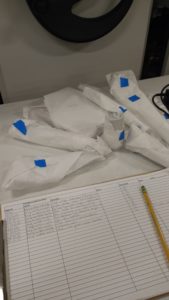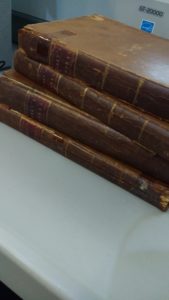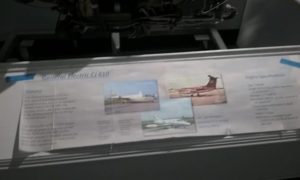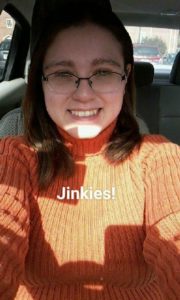Who knew Museum work could be fun? Engaging and entertaining days have been a staple of my time at the Salem Museum. With a friendly staff and a young internship coordinator, the Salem Museum knows how to make history fun and accessible, especially for its interns. While designing exhibits, researching, writing signs, and even accessioning artifacts, I often find myself laughing and making jokes along with my coworkers. Whether it be about the struggles of the editing tag-team of Kerstan and myself, or the stories we make up about some exhibits, we’re constantly finding ways to keep ourselves entertained and engaged in our work. The joviality of the Salem Museum is best described by the newly opened holiday toys exhibit. Throughout the Museum, we’ve set up a series of encased and interactive holiday toys for our guests to enjoy. The featured exhibit in this series is a model train/village display. After playing with an assortment of dolls, civil war figurines, and a frequently “quality-tested” game of arcade baseball, guests can make their way upstairs to the model train. Though they may be startled it’s motion-sense activation, all will love watching the train pass through a model of Salem, complete with its own Roanoke College! For a little extra fun, we made up stories for many of the figures in the display…and we encourage our guests to do the same! In all, the Salem Museum has done a perfect job of making history entertaining and engaging for all who visit.
Quality control testing of a civil war (feudal?) era sword.



 Cool Decorative doorknob donated to the museum.
Cool Decorative doorknob donated to the museum.










